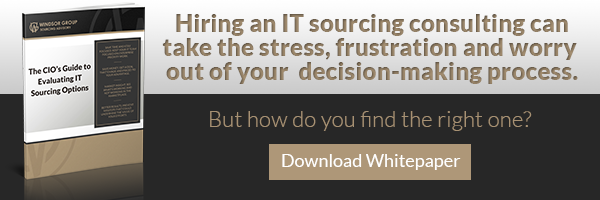
CIOs are on the front line in the war against digital disruption, and many are facing an uphill battle. Amazon, the undisputed leader in cloud computing technology, alone has catapulted today’s digital business era so far forward that long-established firms have had no choice but try to keep up. At risk of trailing behind, modern enterprises are looking to rapid digital transformation as the solution for this revolution; and lucky for CIOs, they are often the ones tasked with tackling such a beast.
The Dilemma
The rising need for organizations to optimize costs, reduce time-to-market, and improve the customer experience has placed an immense amount of pressure on IT leaders to deliver the tools and resources necessary to support today’s digital demands. However, achieving this sort of immediate agility while maintain stability and staying within budget constraints is close to impossible; therein lies the dilemma that so many CIOs are faced with.
So, how do IT leaders balance the demands for transformation and the need to maintain stability without blowing the bank? Do they seek out solutions that solve for their current systematic hindrances, or do they look for solutions that will future-proof themselves (as best they can, that is) against new demands that will undoubtedly surface as digital continues to shape the IT landscape?
Solving for Now
Unfortunately, most enterprises don’t have the luxury to execute an entire infrastructure rip and replace and wipe their hands clean of digital disruption. Instead, the majority of enterprises are forced to look within their existing infrastructure to identify areas that can be enhanced, optimized, or updated in a way that improves their digital capabilities, but postpones the price tag associated with such a large-scale transformation.
Cost aside, digital transformations are high risk, and can cause significant operational and organizational disruption if they aren’t executed seamlessly. Meaning, it may not be in a CIOs best interest to compromise his or her organization’s data and systems in an effort to immediately adapt to digital demands.
With that said, solely focusing on immediate issues in the hopes of avoiding a big expense is, frankly, short-sighted. In fact, most organizations that only solve for ‘the now’ end up paying for it, and likely for a higher price, down the road.
Solving for the Future
On the other side of the coin, there are organizations that are much more concerned with the future needs and demands of their business, and are much less focused on the current challenges they face. Taking a proactive approach is critical to the sustainability and relevancy of any organization, but is particularly important for organizations within an industry as ever-evolving as IT. Although it requires a substantial budget to support it, enterprises that strive to achieve the level of innovation and thought-leadership that today, and tomorrow’s, demands call for are able to serve their business and their customers far better than those that do not.
However, only focusing on future demands is equally as risky as only focusing on current demands. Organizations that overlook immediate challenges to focus solely on adopting the newest and most advanced technologies are likely creating internal organizational and operational hurdles for their team, and are subsequently failing to effectively serve the current needs of their customers.
The Answer
Solving for now and planning for the future both have their advantages and disadvantages, but both are two different extremes. Rather than choosing one approach over the other, enterprises that employ a blended IT strategy that aligns solving today’s challenges with planning for future demands is the best way to find a healthy balance between transformation, stability, and expense.
At the end of the day, it will ultimately be the CIO’s discretion as to which solution is best suited for their business. However, IT sourcing advisors, like Windsor Group, can provide the strategic guidance and consultation necessary to effectively analyze current costs, define opportunities and assess various solutions to address an organization’s specific needs, and evaluate alternative outsourcing options to determine the best sourcing strategy to employ based on an organization’s current state and desired future direction.


